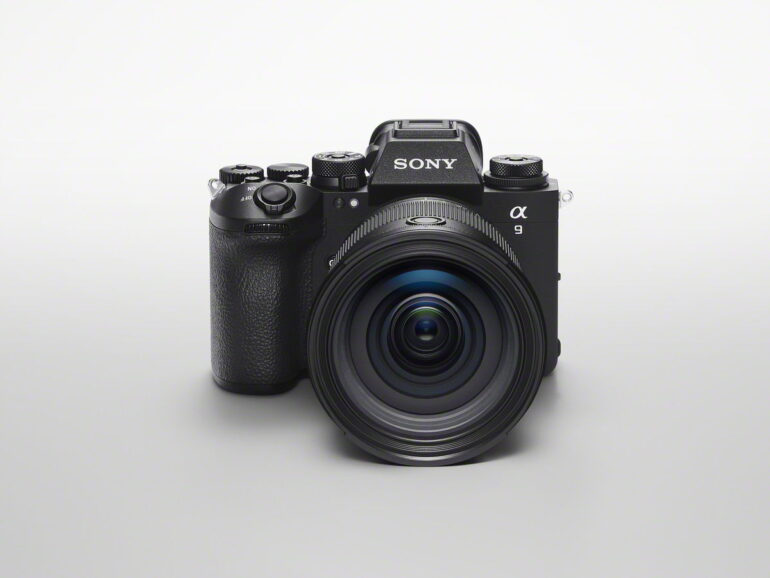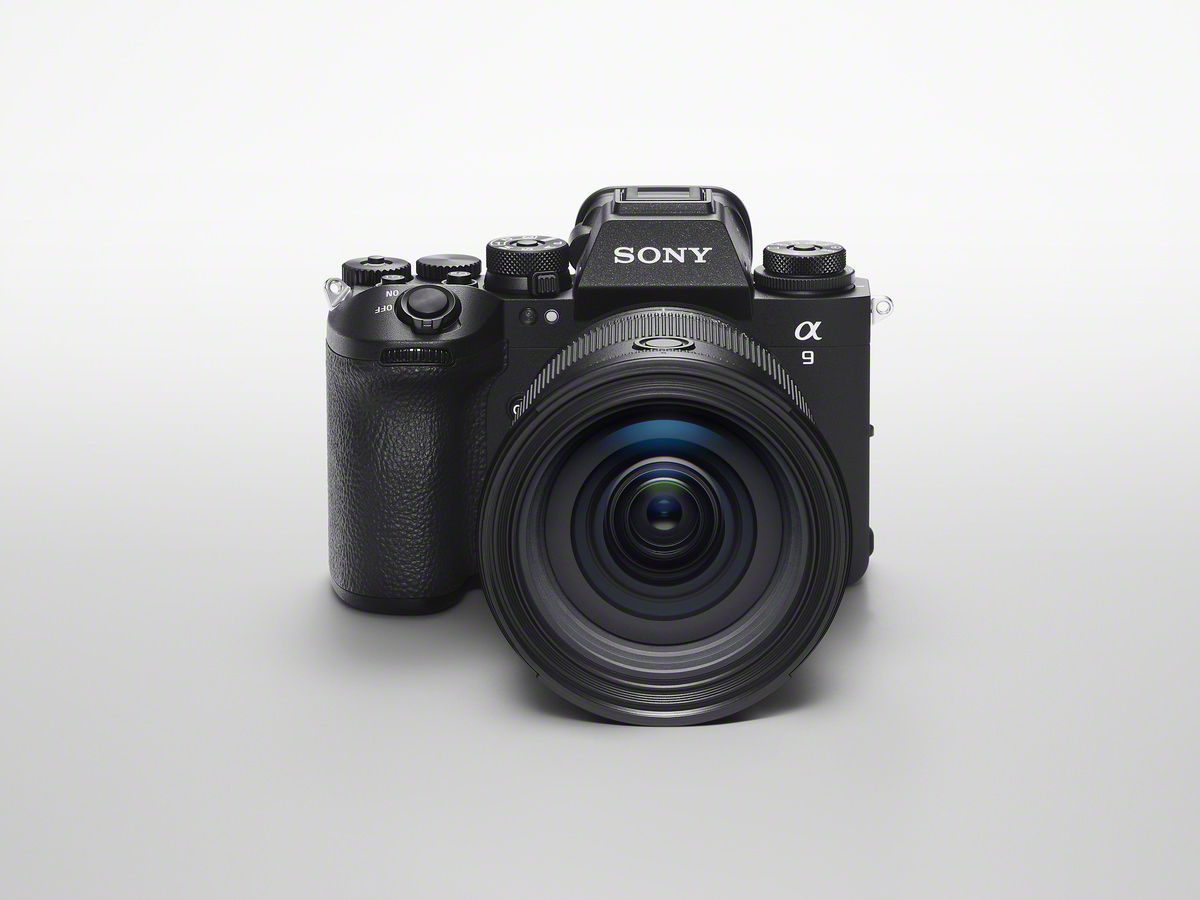Last Updated on 11/07/2023 by Hillary Grigonis
The highly anticipated Sony a9 III has arrived — and with it comes a global shutter that eliminates rolling shutter distortion and allows flash sync at any shutter speed. During a Creative Space event held in New York on November 7, Sony announced the new Sony a9 III mirrorless camera, as well as the new Sony FE 300mm f2.8 GM OSS.
The camera sports the world’s first global shutter on a full-frame sensor. That allows for 120 fps without rolling shutter distortion — but what’s even more iconic is that the camera doesn’t have a flash sync speed limit and can shoot flash even at the new high speed of 1/80,000 without high-speed sync.
Sony a9 III Key Features
- 24.6-megapixel full-frame stacked sensor
- Global shutter at up to 120 fps
- No flash sync speed limits, even while using third-party flashes
- Global shutter also eliminates banding caused by flickering lights
- Shutter speed up to 1/80,000 in single shot, burst up to 1/16,000
- Shortcut button to quickly go from 20 fps to 120 fps
- In-camera star rating to quickly sort through those 120 fps bursts
- Pre-Capture for up to 1 second before the shutter is released
- Real-time eye autofocus, even with 120 fps
- 759 autofocus points covering 95.6 percent of the frame
- Low light autofocus down to -5 EV at f1.8
- Tilting LCD touchscreen
- 9.44 million dot OLED EVF with 120 fps refresh rate at highest quality or 240 fps with reduced quality
- Dust and weather-resistant
- Shipping Spring 2024 for $5,999
The SOny a9 iii’s global shutter solves key issues
The idea of a global shutter has long circulated in photographer’s dreams because it solves a few key problems plaguing today’s cameras. But not all of those issues are specific to sports and wildlife. A traditional electronic shutter exposes one row of pixels at a time. While this all happens very quickly, for the fastest subjects, it can cause a train to appear to lean or a golf club to appear to have a curve to it. That’s why mechanical shutters have long been considered superior to electronic ones.
A global shutter exposes all of the pixels simultaneously, which eliminates that rolling shutter distortion. But that’s not the only issue the Sony a9 II has just solved. Traditional electronic shutters also suffer from banding created by subtle light flickers that change the amount of light in the image as it is being exposed, resulting in a line of pixels darker than the rest. With a global shutter, shooting fast shutter speeds under artificial lights doesn’t generate that banding.
Still, what’s perhaps even more exciting is that the Sony a9 III doesn’t have a limited flash sync speed. The camera can work with a flash even at its top speed of 1/80,000 without high-speed sync. Most cameras require high-speed sync to use a flash beyond 1/250 seconds. But, high-speed sync emits smaller bursts of light, which makes the HSS mode less powerful and also tends to drain the battery. The Sony a9 III doesn’t need that HSS mode, and Sony says the feature isn’t limited to just Sony-branded flashes either.
The SOny a9 ii is designed for sports with 120 fps and autofocus
While the global shutter is the most stand-out feature on the new Sony a9 III, the third generation continues the line’s sports and wildlife focus with 120 fps burst shooting. That’s no longer unheard of, but these triple-digit burst speeds typically don’t come with autofocus. The 120 fps on the Sony a9 III includes autofocus and subject detection autofocus. It can maintain that speed for up to 192 images while still shooting 14-bit RAW files.
That fast burst speed also comes with Pre-Capture, which is Sony’s name for capturing images before the shutter release is pressed. Pre-Capture works for up to one second before the shutter is fully pushed, even in 120 fps mode. That’s going to be a boost for shooting wildlife and sports where every split second matters.
That super-fast frame rate will be a pain to sort through, but Sony has added a few features to help. The first is the C5 button, which, when held, activates the 120 fps mode. That allows photographers to shoot at 20 fps most of the time but quickly shoot at 120 fps when a moment requires it. That’s all without digging into the menu, which would often mean missing that high-paced moment. The other design feature to help manage those bursts is that the bursts are grouped together in playback and play as a movie. Images can then be tagged from that movie for faster culling later.
A sensor still designed for sports
The Sony a9 series has always been more about speed than impressive I-can-see-every-pore resolution. That’s still the case on the third generation, which sports a 24.6-megapixel sensor. The sensor design is stacked, which is going to help the camera handle the whopping 6 GB of data that’s coming in for every second of 120 fps burst shooting.
The camera’s design also speaks to sports and wildlife, with a 9.44 million dot viewfinder that offers a 120 fps refresh rate with blackout-free shooting. The updated ergonomics that add that custom C5 button also carry over into the optional grip accessory, which is designed to offer the same exact layout when shooting vertically.
Sony FE 300mm f2.8 G Master OSS key features

- Lightest full frame 300mm f2.8 yet at 51.9 ounces
- Designed for G Master sharpness
- Two linear XD autofocus motors
- Function ring quickly enters into APS-C crop mode
- Magnesium alloy construction that is dust and moisture-resistant
- Redesigned hood with one-handed unlock
- Shipping in Spring 2024 for $5,999
A lightweight, bright prime
Sony says the new 300mm f2.8 G Master OSS is as light as the first generation E-Mount 70-200mm f2.8. That will make the telephoto easier to cart around on the sidelines or take for a hike. Sony says it’s the lightest full-frame 300mm f2.8 on the market.
As part of the G Master series, the lens is designed for a mix of smooth bokeh and sharp subjects. It uses three Super Extra-low dispersion elements and one ED element with an 11-blade circular aperture.
Like the Sony a9 III, the new Sony FE 300mm f2.8 GM OSS lens is made for speed. It uses two linear autofocus motors for autofocus that are both quick and quiet. Sony says it’s designed to keep up with the 120 fps on the a9 III.
The lens is compatible with teleconverters, but it uses a built-in ring that will quickly activate APS-C crop mode. That allows the lens to crop in closer without going in and out of the menu. The crop mode sacrifices some resolution on the edges of the sensor, but it is a quick and easy way to get it right in-camera.
Both the camera and lens are slated for a Spring 2024 release, and both have a $5,999 price point as well.


